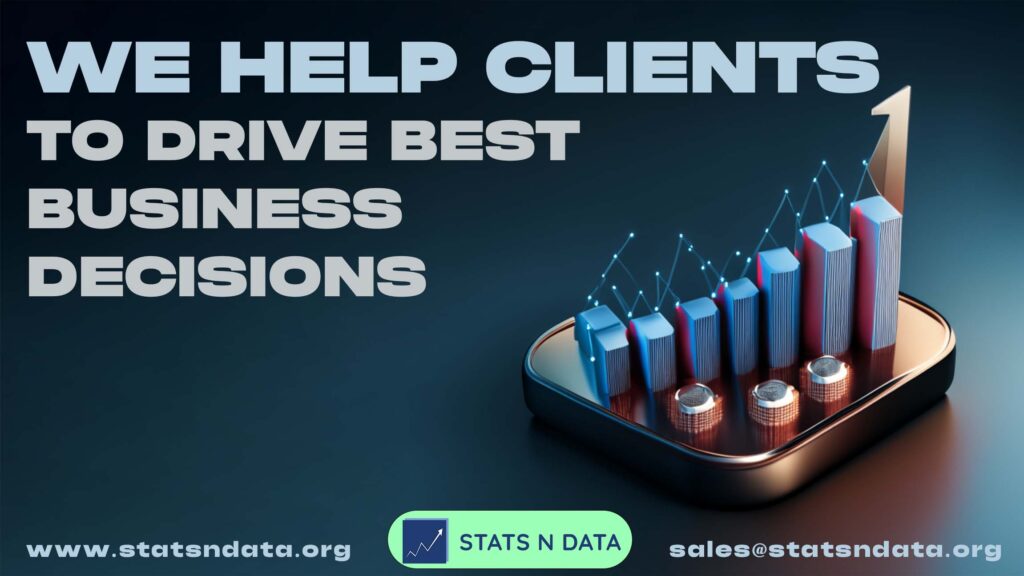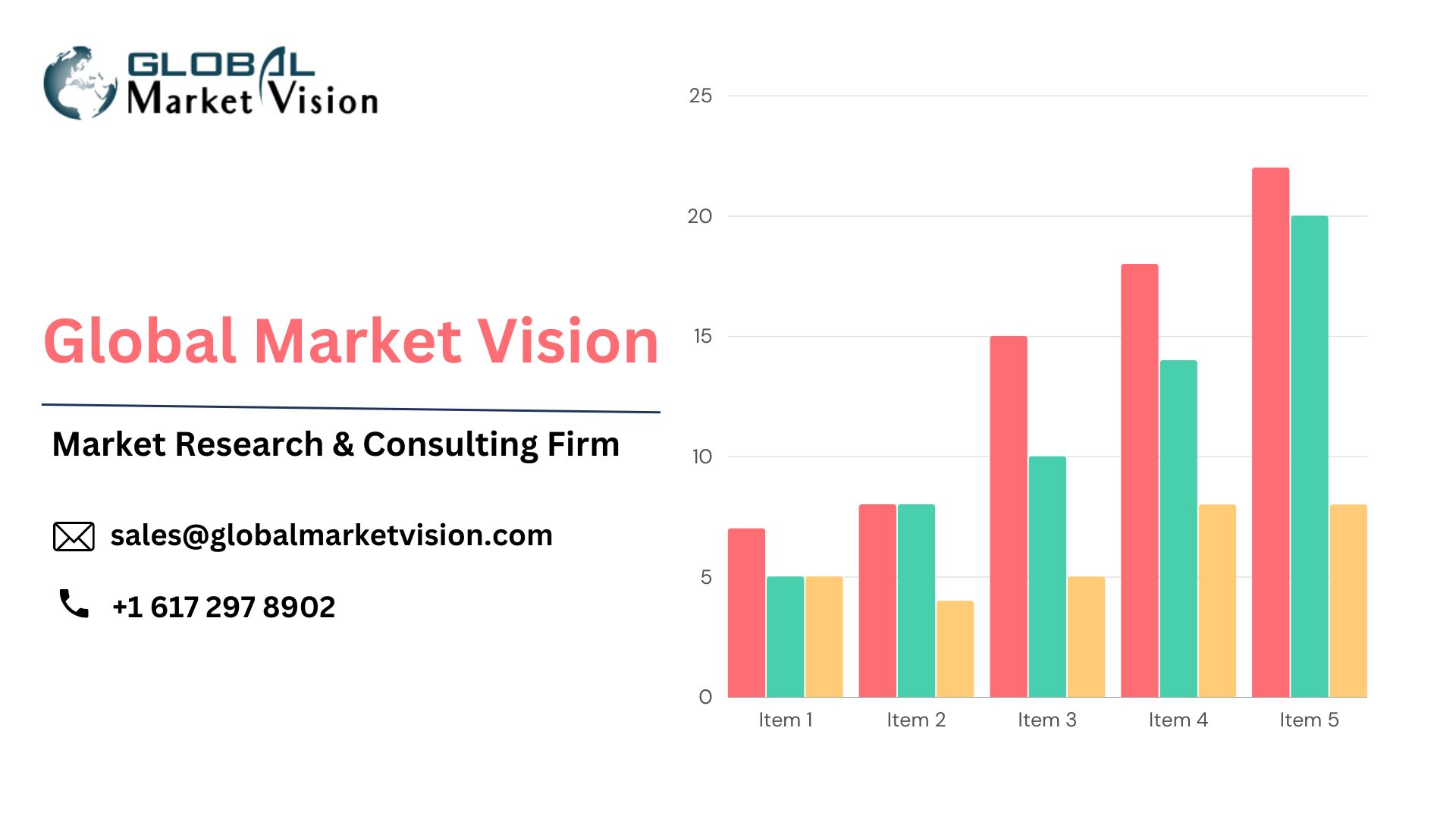Month: September 2023

MMS • Sergio De Simone

JetBrains has announced its new standalone Rust IDE, RustRover, which is now accessible under an early access program and will bring Rust support on a par with other languages supported by JetBrains IDEs, says the company.
While JetBrains was the main force behind the open source Rust plugin for IntelliJ IDEA and CLion, the Czech software company decided to stop developing it and move to a commercial, closed-source solution specifically dedicated to Rust in order to provide a better experience for Rust developers, says JetBrains.
RustRover supports syntax highlighting and code completion, code generation, on-the-fly quick fixes, smart refactoring, and live templates. It also provides an integrated debugger, test runners, run configurations, profiling and performance analysis, and includes features specifically dedicated to Web app development, such as integrated HTTP client, database access, and Docker support.
Furthermore, RustRover will play nicely with other languages and tools used in the Rust ecosystem, including Cargo and TOML, and integrate with Git, GitHub, and other VCS.
Based on this list of features, JetBrains says RustRover will bring Rust support on a par with JetBrains IDEs for other languages.
JetBrains announcement was met with mostly positive remarks on both Hacker News and Reddit, with several commenters highlighting the value of having an IDE dedicated to Rust that is officially supported and backed by paying customers). Others brought the attention to the superiority of a standalone IDE vs. a general IDE supporting a variety of languages, such as using IntelliJ with language-specific plugins.
Other commenters criticized the fact that JetBrains is deprecating the current Rust plugin for IntelliJ and CLion.
For the existing open-source plugin, we’ll do our best to maintain compatibility with newer versions of our IDEs, but we won’t be fixing bugs or adding new features.
The plugin will anyway remain open source and is licensed under the MIT license, which will make it possible for the community to bring its development further.
JetBrains says they will officially release RustRover when it is ready, hopefully no later than September 2024.

MMS • RSS

Statsndata has released a comprehensive report on the collection, analysis, and interpretation of NoSQL Databases Software Market data. This report highlights the importance of leveraging such data to foster not only individual business growth but also the overall progress of the entire it-telecom industry.
You can access a sample of this report here:https://www.statsndata.org/download-sample.php?id=7691
The report provides a thorough overview of the NoSQL Databases Software market, encompassing its definition, applications, development, and manufacturing technology. It meticulously tracks recent NoSQL Databases Software market developments and innovations, offering valuable insights into overcoming challenges that businesses may encounter while pursuing growth.
Key industry players, including:
• MongoDB
• Amazon
• ArangoDB
• Azure Cosmos DB
• Couchbase
• MarkLogic
• RethinkDB
• CouchDB
• SQL-RD
• OrientDB
• RavenDB
• Redis
• , are featured prominently in the report, shedding light on their business strategies, financial status, and upcoming products
The research for this NoSQL Databases Software market report employed various methods, such as surveys, focus groups, interviews, and observations. Data was collected in both qualitative and quantitative forms. NoSQL Databases Software qualitative data encompassed opinions and attitudes, while quantitative data was expressed in statistical figures. These results were meticulously analyzed to draw conclusions and inform decision-making.
The NoSQL Databases Software report also provides a regional perspective, highlighting key markets in:
• North America
• South America
• Asia Pacific
• Middle East and Africa
• Europe
Market segmentation is a crucial aspect, categorizing the market by type, product, and end-user. This segmentation enhances the accuracy of market descriptions.
NoSQL Databases Software Market Segmentation Analysis includes:
NoSQL Databases Software Market segmentation : By Type
• Large Enterprises
• SMEs
•
NoSQL Databases Software Market Segmentation: By Application
• Cloud Based
• Web Based
•
For customizations and specific requests, you can visit: https://www. statsndata.org/request-customization.php?id=7691
The report’s primary objectives are:
- To provide qualitative and quantitative analysis of NoSQL Databases Software market trends, dynamics, and forecasts from 2023 to 2029.
- To utilize analytical tools like SWOT analysis and Porter’s Five Forces analysis to assess the profit potential for NoSQL Databases Software buyers and suppliers, aiding them in strategic decision-making.
- To conduct in-depth market segmentation analysis, uncovering existing market opportunities.
- Ultimately, to save businesses time and money by consolidating unbiased information in one accessible source.
Conclusion
In conclusion, this market research is an essential tool for companies to identify optimal strategies, recognize opportunities, and mitigate threats. Staying informed about the latest NoSQL Databases Software market trends and developments is vital for maintaining competitiveness in the industry.
Table Of Content
Chapter 1 NoSQL Databases Software Market Overview
1.1 Product Overview and Scope of NoSQL Databases Software
1.2 NoSQL Databases Software Market Segmentation by Type
1.3 NoSQL Databases Software Market Segmentation by Application
1.4 NoSQL Databases Software Market Segmentation by Regions
1.5 Global Market Size (Value) of NoSQL Databases Software (2018-2029)
Chapter 2 Global Economic Impact on NoSQL Databases Software Industry
2.1 Global Macroeconomic Environment Analysis
2.2 Global Macroeconomic Environment Analysis by Regions
Chapter 3 Global NoSQL Databases Software Market Competition by Manufacturers
3.1 Global NoSQL Databases Software Production and Share by Manufacturers (2023 and 2023)
3.2 Global NoSQL Databases Software Revenue and Share by Manufacturers (2023 and 2023)
3.3 Global NoSQL Databases Software Average Price by Manufacturers (2023 and 2023)
3.4 Manufacturers NoSQL Databases Software Manufacturing Base Distribution, Production Area and Product Type
3.5 NoSQL Databases Software Market Competitive Situation and Trends
Chapter 4 Global NoSQL Databases Software Production, Revenue (Value) by Region (2018-2023)
4.1 Global NoSQL Databases Software Production by Region (2018-2023)
4.2 Global NoSQL Databases Software Production Market Share by Region (2018-2023)
4.3 Global NoSQL Databases Software Revenue (Value) and Market Share by Region (2018-2023)
4.4 Global NoSQL Databases Software Production, Revenue, Price and Gross Margin (2018-2023)
Continue…
Buy the full report:https://www .statsndata.org/checkout-report.php?id=7691
Contact Us
Related Report

MMS • RSS
On September 13, 2023, an interesting development was observed in the options market for MongoDB (NASDAQ:MDB). A significant position was taken by a bearish investor, who can be referred to as a “whale” due to the size of their trade. Surprisingly, 63% of the overall sentiment surrounding this position was bearish, indicating a pessimistic outlook on the stock.
This bearish whale executed a total of 11 options trades, which can be considered quite uncommon. Among these trades, 6 were puts (which give the holder the right to sell the stock) and 5 were calls (which give the holder the right to buy the stock). The target price range for MongoDB, as indicated by these options trades, was between $130.0 and $520.0 over the course of the last 3 months.
To further analyze the impact of these whale trades, it is worth examining the volume and open interest of calls and puts within the strike price range of $130.0 to $520.0. Unfortunately, the specific data regarding these trades is not available in this rewritten text, but it can be found on Benzinga’s website in the form of a chart.
This development in the options market for MongoDB raises intriguing questions about the future direction of the stock. It is important to note that this information is based on the reference date of September 13, 2023, and should be considered within the context of that timeframe.
MDB Stock Analysis: Promising Future Despite Negative Net Profit Margin
On September 13, 2023, MDB stock had some interesting movements in the market. The stock opened at $374.28 and had a range of $370.93 to $378.60. The trading volume for the day was 31,608 shares and the market capitalization for MDB stood at $26.9 billion.
In terms of earnings growth, MDB experienced a decline of 5.89% in the previous year but showed significant improvement this year with earnings growth of 92.12%. Analysts predict a steady growth rate of 8.00% for the next five years. The revenue growth of MDB was 46.95% in the previous year.
MDB’s price-to-sales ratio is 11.45 and the price-to-book ratio is 35.64.
In comparison to other companies in the industry, HubSpot Inc (HUBS) experienced a decline of 1.79% in its stock price, while ANSYS Inc (ANSS) saw a decrease of 0.65%. Take-Two Interactive Software Inc (TTWO) had a positive day with a 1.03% increase in its stock price.
MDB’s next reporting date is scheduled for December 6, 2023. Analysts are forecasting earnings per share (EPS) of $0.27 for the current quarter. In the previous year, MDB generated annual revenue of $1.3 billion but suffered a net loss of $345.4 million. The net profit margin for the company was -26.90%.
Despite the negative net profit margin, MDB’s strong revenue growth and positive earnings growth this year indicate a promising future. Investors will be keeping a close eye on the company’s upcoming earnings report to assess its performance and potential for further growth. MDB remains an important player in the packaged software industry.
MDB Stock Performance on September 13, 2023: Positive Outlook and Strong Sales
MDB Stock Performance on September 13, 2023:
– Based on data from CNN Money, the 23 analysts offering 12-month price forecasts for MDB have a median target of $450.00, with a high estimate of $500.00 and a low estimate of $250.00.
– The consensus among 28 polled investment analysts is to buy stock in MongoDB Inc.
– MongoDB reported earnings per share of $0.27 for the current quarter.
– MongoDB reported sales of $389.8 million.
– Investors are eagerly awaiting the reporting date of December 6, when MongoDB will release its financial results for the current quarter.
– Overall, the stock performance of MongoDB Inc on September 13, 2023, appears to be positive.

MMS • RSS

Someone with a lot of money to spend has taken a bearish stance on MongoDB MDB.
And retail traders should know.
We noticed this today when the big position showed up on publicly available options history that we track here at Benzinga.
Whether this is an institution or just a wealthy individual, we don’t know. But when something this big happens with MDB, it often means somebody knows something is about to happen.
So how do we know what this whale just did?
Today, Benzinga‘s options scanner spotted 11 uncommon options trades for MongoDB.
This isn’t normal.
The overall sentiment of these big-money traders is split between 36% bullish and 63%, bearish.
Out of all of the special options we uncovered, 6 are puts, for a total amount of $383,127, and 5 are calls, for a total amount of $208,268.
What’s The Price Target?
Taking into account the Volume and Open Interest on these contracts, it appears that whales have been targeting a price range from $130.0 to $520.0 for MongoDB over the last 3 months.
Volume & Open Interest Development
Looking at the volume and open interest is a powerful move while trading options. This data can help you track the liquidity and interest for MongoDB’s options for a given strike price. Below, we can observe the evolution of the volume and open interest of calls and puts, respectively, for all of MongoDB’s whale trades within a strike price range from $130.0 to $520.0 in the last 30 days.
MongoDB Option Volume And Open Interest Over Last 30 Days
Biggest Options Spotted:
| Symbol | PUT/CALL | Trade Type | Sentiment | Exp. Date | Strike Price | Total Trade Price | Open Interest | Volume |
|---|---|---|---|---|---|---|---|---|
| MDB | PUT | TRADE | BULLISH | 06/21/24 | $520.00 | $161.1K | 2 | 10 |
| MDB | CALL | SWEEP | NEUTRAL | 01/19/24 | $180.00 | $78.8K | 228 | 10 |
| MDB | PUT | TRADE | BEARISH | 02/16/24 | $290.00 | $63.2K | 11 | 50 |
| MDB | PUT | TRADE | BULLISH | 10/20/23 | $380.00 | $51.8K | 448 | 79 |
| MDB | PUT | TRADE | BULLISH | 10/20/23 | $380.00 | $43.3K | 448 | 76 |
Where Is MongoDB Standing Right Now?
- With a volume of 608,559, the price of MDB is down -1.01% at $370.79.
- RSI indicators hint that the underlying stock may be approaching overbought.
- Next earnings are expected to be released in 83 days.
What The Experts Say On MongoDB:
- Morgan Stanley has decided to maintain their Overweight rating on MongoDB, which currently sits at a price target of $480.
- Citigroup has decided to maintain their Buy rating on MongoDB, which currently sits at a price target of $455.
- Argus Research has decided to maintain their Buy rating on MongoDB, which currently sits at a price target of $484.
- Truist Securities has decided to maintain their Buy rating on MongoDB, which currently sits at a price target of $430.
- Barclays has decided to maintain their Overweight rating on MongoDB, which currently sits at a price target of $450.
Options are a riskier asset compared to just trading the stock, but they have higher profit potential. Serious options traders manage this risk by educating themselves daily, scaling in and out of trades, following more than one indicator, and following the markets closely.
If you want to stay updated on the latest options trades for MongoDB, Benzinga Pro gives you real-time options trades alerts.

MMS • RSS

What is Amazon SimpleDB? A Comprehensive Guide
Welcome to the “Definitions” category of our page! In this blog post, we’ll dive deep into the world of Amazon SimpleDB and explore what it is all about. So, whether you’re a seasoned developer or just starting your journey in the tech industry, this comprehensive guide will help you understand the ins and outs of Amazon SimpleDB.
–>
<!–
–>
Key Takeaways:
- Amazon SimpleDB is a highly scalable and fully managed NoSQL database service offered by Amazon Web Services (AWS).
- It provides a simple and cost-effective way to store and retrieve structured data, making it ideal for applications requiring high availability, low latency, and scalability.
Defining Amazon SimpleDB
–>
Now, let’s answer the burning question: what exactly is Amazon SimpleDB? Put simply, Amazon SimpleDB is a cloud-based NoSQL database service provided by AWS. NoSQL stands for “non-relational,” which means it doesn’t follow the traditional table-based relational database structure. Instead, it organizes data into domains, attributes, and values, allowing for flexible and scalable data storage and retrieval.
With Amazon SimpleDB, you can store and query structured data without worrying about server provisioning, maintenance, or scaling. It automatically manages the infrastructure, handles data replication, and ensures high availability, freeing you up to focus on your application development rather than the underlying database management.
How Does Amazon SimpleDB Work?
When it comes to understanding how Amazon SimpleDB works, it’s essential to grasp a few fundamental concepts:
- Domains: A domain in Amazon SimpleDB is akin to a table in traditional databases. It acts as a container for your data and provides a way to logically separate different types of information.
- Items: Items represent individual data points stored within a domain. Each item contains a unique identifier called an item name and a set of attributes with corresponding values.
- Attributes: Attributes are the specific pieces of information that describe an item. Each attribute has a name and a value. There can be multiple attributes within a single item, allowing you to store a variety of data types.
- Queries: To retrieve data from Amazon SimpleDB, you can use a specialized query language called Structured Query Language (SQL)-like syntax. It allows you to specify conditions for retrieving specific data based on attribute values.
It’s worth mentioning that Amazon SimpleDB offers flexible scalability. As your application’s data needs grow, Amazon SimpleDB automatically scales to accommodate increased traffic and demand, ensuring consistent performance.
Benefits of Amazon SimpleDB
Now that you have a good understanding of what Amazon SimpleDB is, let’s explore the key benefits it offers:
- Scalability: Amazon SimpleDB automatically scales the infrastructure to accommodate your application’s needs, allowing you to handle large amounts of data and high traffic without worrying about provisioning resources.
- High Availability: With data replication across multiple availability zones, Amazon SimpleDB provides built-in high availability. It ensures that your application continues running even in the face of hardware failures or other disruptions.
- Low Latency: Amazon SimpleDB is designed to offer low latency for read and write operations, allowing your applications to respond quickly to user requests in real-time.
- Cost-Effective: With a pay-as-you-go pricing model, you only pay for the resources you use. This makes Amazon SimpleDB a cost-effective choice, particularly for startups or small businesses.
By leveraging these benefits, you can streamline your application development process and focus on building robust and scalable solutions.
Get Started with Amazon SimpleDB
If you’re ready to dive into the world of Amazon SimpleDB, getting started is straightforward. You can sign up for AWS, navigate to the Amazon SimpleDB service, and create your domains to start storing and retrieving your structured data.
Remember, Amazon SimpleDB is just one of the many incredible services offered by AWS. By combining it with other AWS tools and services, such as Amazon S3 for object storage or Amazon EC2 for compute resources, you can build powerful and highly scalable applications in the cloud.
So, there you have it! A comprehensive guide to Amazon SimpleDB, a NoSQL database service that allows you to store and retrieve structured data in the cloud. Armed with this knowledge, you’re well-equipped to take advantage of the scalability, high availability, and low latency it offers. As technology continues to evolve, Amazon SimpleDB will undoubtedly play a crucial role in empowering developers to build innovative solutions.
–>
Public Cloud Non-Relational Databases And Nosql Database Market to Flourish … – Laguna Now

MMS • RSS
“
Report Description:
The Global Public Cloud Non-Relational Databases And Nosql Database Market Report by Global Market Vision is a comprehensive study about top companies, revenue share, data streams, ongoing deals, purchases and dealer volume. The report includes corrective market classifications, application definitions, and a sincere market overview. The Public Cloud Non-Relational Databases And Nosql Database market is based on specific parameters that aims to dictate proven facts to professionals who are looking to upgrade their current market aspects.
Get PDF Sample Report + All Related Tables and Graphs at: https://globalmarketvision.com/sample_request/208370
Top Key Players:
Ibm, Mongodb Inc, Aws(Amazon Web Services), Apache Software Foundation, Neo Technologies (Pty) Ltd, Intersystems, Google, Oracle Corporation, Teradata, Datastax, Software Ag
Public Cloud Non-Relational Databases And Nosql Database Market by Type
Key Value Storage Database, Column Storage Database, Document Database, Graph Database
Public Cloud Non-Relational Databases And Nosql Database Market by Application:
Automatic Software Patching, Automatic Backup, Monitoring And Indicators, Automatic Host Deployment
The competitive landscape of the market study contains a broader analysis on the regions including North America, Europe, Asia Pacific, The Middle East and Africa, Latin America which are expected to capture the core essence of the market in its widest category. The list covers significant players that manage the industry based on overall system production capabilities, environmental contributions, appropriate channels, and territorial nearness through a system of primary and secondary research methodologies further followed by an in-house analytical model. Furthermore, income generated and a generalized market share for the market is showcased with the help of charts, graphs, and tables.
In addition, the report also contains major collaborations, mergers and acquisitions, leading market trends, and business policies are evaluated. The study contains primary and secondary information that pertains to the Public Cloud Non-Relational Databases And Nosql Database market in terms of global status, market size, growth forecasts, trends, segments and a detailed forecast.
Key Insights of the Report:
- The report provides key statistics on the market status of the Public Cloud Non-Relational Databases And Nosql Database manufacturers and is a valuable source of guidance and direction for companies and individuals interested in the industry.
- The report provides a basic overview of the industry including its definition, applications and manufacturing technology.
- The report presents the company profile, product specifications, capacity, production value, and 2023-2030 market shares for key vendors.
- The total market is further divided by company, by country, and by application/type for the competitive landscape analysis.
- The report estimates 2023-2030 market development trends of Public Cloud Non-Relational Databases And Nosql Database industry.
- Analysis of upstream raw materials, downstream demand, and current market dynamics is also carried out.
- The report makes some important proposals for a new project of Public Cloud Non-Relational Databases And Nosql Database Industry before evaluating its feasibility.
Cumulative Impact Covid-19:
This study presents insights on COVID-19 in consumer behavior and shifts in demand, purchasing patterns, supply chain reorganization, market forces dynamics and substantial government involvement. The new research provides insights, analyses, estimates and forecasts in view of COVID-19’s effect on the markets. The Public Cloud Non-Relational Databases And Nosql Database market report delivers a solid watch on the prominent players in terms of strategic analysis, micro and macro market trends and opportunities, pricing trends and a generalized overview of the market. The Public Cloud Non-Relational Databases And Nosql Database market is a detailed study packed with primary and secondary market drivers, market share, leading segments, and an apt geographical analysis.
Key Questions Answered in this Report:
- What will be the size of the market and the pace of growth in 2030?
- What are the primary drivers of the worldwide market?
- What are the main market trends that have an impact on global market growth?
- Which are the market growth challenges?
- Who are the main global market suppliers?
- What are the worldwide market opportunities and challenges for sellers?
- What are the primary results of the global Public Cloud Non-Relational Databases And Nosql Database Market five-point analysis?
Direct Purchase this Market Research Report Now @ https://globalmarketvision.com/checkout/?currency=USD&type=single_user_license&report_id=208370
If you have any special requirements, please let us know and we will offer you the report at a customized price.
About Global Market Vision
Global Market Vision consists of an ambitious team of young, experienced people who focus on the details and provide the information as per customer’s needs. Information is vital in the business world, and we specialize in disseminating it. Our experts not only have in-depth expertise, but can also create a comprehensive report to help you develop your own business.
With our reports, you can make important tactical business decisions with the certainty that they are based on accurate and well-founded information. Our experts can dispel any concerns or doubts about our accuracy and help you differentiate between reliable and less reliable reports, reducing the risk of making decisions. We can make your decision-making process more precise and increase the probability of success of your goals.
Get in Touch with Us
Sarah Ivans | Business Development
Phone: +1 805 751 5035
Phone: +44 151 528 9267
Email: [email protected]
Global Market Vision
Website: www.globalmarketvision.com
”

MMS • RSS
“
Report Description:
The Global Nosql Software Market Report by Global Market Vision is a comprehensive study about top companies, revenue share, data streams, ongoing deals, purchases and dealer volume. The report includes corrective market classifications, application definitions, and a sincere market overview. The Nosql Software market is based on specific parameters that aims to dictate proven facts to professionals who are looking to upgrade their current market aspects.
Get PDF Sample Report + All Related Tables and Graphs at: https://globalmarketvision.com/sample_request/207065
Top Key Players:
Mongodb, Amazon, Arangodb, Azure Cosmos Db, Couchbase, Marklogic, Rethinkdb, Couchdb, Sql-Rd, Orientdb, Ravendb, Redis, Microsoft
Nosql Software Market by Type
Cloud Based, Web Based
Nosql Software Market by Application:
E-Commerce, Social Networking, Data Analytics, Data Storage, Others
The competitive landscape of the market study contains a broader analysis on the regions including North America, Europe, Asia Pacific, The Middle East and Africa, Latin America which are expected to capture the core essence of the market in its widest category. The list covers significant players that manage the industry based on overall system production capabilities, environmental contributions, appropriate channels, and territorial nearness through a system of primary and secondary research methodologies further followed by an in-house analytical model. Furthermore, income generated and a generalized market share for the market is showcased with the help of charts, graphs, and tables.
In addition, the report also contains major collaborations, mergers and acquisitions, leading market trends, and business policies are evaluated. The study contains primary and secondary information that pertains to the Nosql Software market in terms of global status, market size, growth forecasts, trends, segments and a detailed forecast.
Key Insights of the Report:
- The report provides key statistics on the market status of the Nosql Software manufacturers and is a valuable source of guidance and direction for companies and individuals interested in the industry.
- The report provides a basic overview of the industry including its definition, applications and manufacturing technology.
- The report presents the company profile, product specifications, capacity, production value, and 2023-2030 market shares for key vendors.
- The total market is further divided by company, by country, and by application/type for the competitive landscape analysis.
- The report estimates 2023-2030 market development trends of Nosql Software industry.
- Analysis of upstream raw materials, downstream demand, and current market dynamics is also carried out.
- The report makes some important proposals for a new project of Nosql Software Industry before evaluating its feasibility.
Cumulative Impact Covid-19:
This study presents insights on COVID-19 in consumer behavior and shifts in demand, purchasing patterns, supply chain reorganization, market forces dynamics and substantial government involvement. The new research provides insights, analyses, estimates and forecasts in view of COVID-19’s effect on the markets. The Nosql Software market report delivers a solid watch on the prominent players in terms of strategic analysis, micro and macro market trends and opportunities, pricing trends and a generalized overview of the market. The Nosql Software market is a detailed study packed with primary and secondary market drivers, market share, leading segments, and an apt geographical analysis.
Key Questions Answered in this Report:
- What will be the size of the market and the pace of growth in 2030?
- What are the primary drivers of the worldwide market?
- What are the main market trends that have an impact on global market growth?
- Which are the market growth challenges?
- Who are the main global market suppliers?
- What are the worldwide market opportunities and challenges for sellers?
- What are the primary results of the global Nosql Software Market five-point analysis?
Direct Purchase this Market Research Report Now @ https://globalmarketvision.com/checkout/?currency=USD&type=single_user_license&report_id=207065
If you have any special requirements, please let us know and we will offer you the report at a customized price.
About Global Market Vision
Global Market Vision consists of an ambitious team of young, experienced people who focus on the details and provide the information as per customer’s needs. Information is vital in the business world, and we specialize in disseminating it. Our experts not only have in-depth expertise, but can also create a comprehensive report to help you develop your own business.
With our reports, you can make important tactical business decisions with the certainty that they are based on accurate and well-founded information. Our experts can dispel any concerns or doubts about our accuracy and help you differentiate between reliable and less reliable reports, reducing the risk of making decisions. We can make your decision-making process more precise and increase the probability of success of your goals.
Get in Touch with Us
Sarah Ivans | Business Development
Phone: +1 805 751 5035
Phone: +44 151 528 9267
Email: [email protected]
Global Market Vision
Website: www.globalmarketvision.com
”

MMS • RSS
 Seaport Global Advisors LLC lessened its position in shares of MongoDB, Inc. (NASDAQ:MDB – Free Report) by 34.2% in the 1st quarter, according to its most recent filing with the Securities & Exchange Commission. The fund owned 913 shares of the company’s stock after selling 475 shares during the quarter. Seaport Global Advisors LLC’s holdings in MongoDB were worth $213,000 at the end of the most recent quarter.
Seaport Global Advisors LLC lessened its position in shares of MongoDB, Inc. (NASDAQ:MDB – Free Report) by 34.2% in the 1st quarter, according to its most recent filing with the Securities & Exchange Commission. The fund owned 913 shares of the company’s stock after selling 475 shares during the quarter. Seaport Global Advisors LLC’s holdings in MongoDB were worth $213,000 at the end of the most recent quarter.
Several other institutional investors and hedge funds have also made changes to their positions in MDB. Price T Rowe Associates Inc. MD grew its holdings in MongoDB by 13.4% during the 1st quarter. Price T Rowe Associates Inc. MD now owns 7,593,996 shares of the company’s stock valued at $1,770,313,000 after buying an additional 897,911 shares during the last quarter. Vanguard Group Inc. increased its position in MongoDB by 2.1% during the 1st quarter. Vanguard Group Inc. now owns 5,970,224 shares of the company’s stock worth $2,648,332,000 after purchasing an additional 121,201 shares in the last quarter. Franklin Resources Inc. raised its stake in MongoDB by 6.4% in the 4th quarter. Franklin Resources Inc. now owns 1,962,574 shares of the company’s stock valued at $386,313,000 after purchasing an additional 118,055 shares during the last quarter. State Street Corp lifted its holdings in MongoDB by 1.8% in the 1st quarter. State Street Corp now owns 1,386,773 shares of the company’s stock valued at $323,280,000 after purchasing an additional 24,595 shares in the last quarter. Finally, 1832 Asset Management L.P. boosted its stake in shares of MongoDB by 3,283,771.0% during the 4th quarter. 1832 Asset Management L.P. now owns 1,018,000 shares of the company’s stock worth $200,383,000 after purchasing an additional 1,017,969 shares during the last quarter. 88.89% of the stock is currently owned by hedge funds and other institutional investors.
Insider Buying and Selling
In related news, CAO Thomas Bull sold 516 shares of the stock in a transaction dated Monday, July 3rd. The shares were sold at an average price of $406.78, for a total value of $209,898.48. Following the sale, the chief accounting officer now owns 17,190 shares of the company’s stock, valued at approximately $6,992,548.20. The transaction was disclosed in a filing with the SEC, which can be accessed through this hyperlink. In related news, CAO Thomas Bull sold 516 shares of the stock in a transaction that occurred on Monday, July 3rd. The stock was sold at an average price of $406.78, for a total value of $209,898.48. Following the completion of the transaction, the chief accounting officer now directly owns 17,190 shares of the company’s stock, valued at approximately $6,992,548.20. The sale was disclosed in a filing with the Securities & Exchange Commission, which is accessible through this link. Also, Director Dwight A. Merriman sold 1,000 shares of MongoDB stock in a transaction on Tuesday, July 18th. The shares were sold at an average price of $420.00, for a total value of $420,000.00. Following the sale, the director now directly owns 1,213,159 shares in the company, valued at approximately $509,526,780. The disclosure for this sale can be found here. Insiders sold a total of 99,694 shares of company stock worth $39,991,889 in the last three months. 4.80% of the stock is owned by insiders.
MongoDB Stock Performance
Shares of NASDAQ MDB traded up $1.52 during midday trading on Wednesday, hitting $376.09. The company’s stock had a trading volume of 235,342 shares, compared to its average volume of 1,686,839. The company has a debt-to-equity ratio of 1.29, a quick ratio of 4.19 and a current ratio of 4.48. MongoDB, Inc. has a 1-year low of $135.15 and a 1-year high of $439.00. The firm’s fifty day moving average price is $387.78 and its 200-day moving average price is $313.60. The firm has a market cap of $26.54 billion, a P/E ratio of -108.26 and a beta of 1.11.
Wall Street Analyst Weigh In
A number of research analysts have weighed in on MDB shares. Canaccord Genuity Group increased their price target on MongoDB from $410.00 to $450.00 and gave the stock a “buy” rating in a research note on Tuesday, September 5th. Truist Financial lifted their price target on MongoDB from $420.00 to $430.00 and gave the company a “buy” rating in a report on Friday, September 1st. The Goldman Sachs Group increased their price objective on shares of MongoDB from $420.00 to $440.00 in a report on Friday, June 23rd. William Blair restated an “outperform” rating on shares of MongoDB in a report on Friday, June 2nd. Finally, Royal Bank of Canada reiterated an “outperform” rating and issued a $445.00 price target on shares of MongoDB in a report on Friday, September 1st. One analyst has rated the stock with a sell rating, three have assigned a hold rating and twenty-one have assigned a buy rating to the company’s stock. According to MarketBeat, the stock presently has a consensus rating of “Moderate Buy” and a consensus target price of $418.08.
Get Our Latest Research Report on MDB
MongoDB Company Profile
MongoDB, Inc provides general purpose database platform worldwide. The company offers MongoDB Atlas, a hosted multi-cloud database-as-a-service solution; MongoDB Enterprise Advanced, a commercial database server for enterprise customers to run in the cloud, on-premise, or in a hybrid environment; and Community Server, a free-to-download version of its database, which includes the functionality that developers need to get started with MongoDB.
Featured Stories
This instant news alert was generated by narrative science technology and financial data from MarketBeat in order to provide readers with the fastest and most accurate reporting. This story was reviewed by MarketBeat’s editorial team prior to publication. Please send any questions or comments about this story to contact@marketbeat.com.
Before you consider MongoDB, you’ll want to hear this.
MarketBeat keeps track of Wall Street’s top-rated and best performing research analysts and the stocks they recommend to their clients on a daily basis. MarketBeat has identified the five stocks that top analysts are quietly whispering to their clients to buy now before the broader market catches on… and MongoDB wasn’t on the list.
While MongoDB currently has a “Moderate Buy” rating among analysts, top-rated analysts believe these five stocks are better buys.

Thinking about investing in Meta, Roblox, or Unity? Click the link to learn what streetwise investors need to know about the metaverse and public markets before making an investment.

MMS • RSS
MongoDB Launches Academia Program in India to Upskill 500,000 Students

MongoDB partners with ICT Academy to equip Indian students and educators with the knowledge needed to build modern, AI-powered applications and help close the skills gap in the tech industry
MongoDB, Inc. today announced the launch of the MongoDB for Academia program in India to train more than 500,000 students with the skills required to use MongoDB Atlas—the leading, multi-cloud developer data platform. The MongoDB for Academia program provides training for students, curriculum resources for educators, credits to use MongoDB technology at no cost, and certifications to help individuals enter careers in the tech industry. As part of the launch of MongoDB for Academia in India, MongoDB is partnering with ICT Academy, a not-for-profitn educational initiative of the Government of Tamil Nadu and the Government of India that has a mission to train higher education teachers and students to help close the technology skills gap in India. The partnership will support MongoDB’s initiatives to upskill students and train more than 1,000 educators through collaboration with more than 800 educational institutions. To get started with MongoDB for Academia, visit MongoDB. comacademia.
Many Indian organizations in the tech industry struggle to find developers with the skills needed to build modern applications and take advantage of new technologies like generative AI that are propelling a wave of innovation and disrupting industries. According to a report from the National Association of Software and Service Companies examining India’s tech industry talent gap, 65 percent of the 800,000 computer science, IT, and math graduates in India did not possess the necessary skills required to enter high-demand tech roles. This gap underscores the need for increased collaboration between industry and academia to provide the real-world training needed to upskill students and educators in India to meet the demands of the country’s large and growing tech industry.
The MongoDB for Academia program helps close this gap by giving educators and students the knowledge and skills needed to use MongoDB Atlas, which integrates all of the data services needed to build modern applications with a unified developer experience. MongoDB Atlas has enabled tens of thousands of organizations and millions of developers globally to accelerate application development by seamlessly handling transactional workloads, app-driven analytics, full-text search, AI-enhanced experiences, high-velocity and volume stream data processing, and more—all while reducing data infrastructure sprawl, cost, and complexity across organizations. MongoDB for Academia will offer educator and student participants in India the following benefits
Access to hundreds of thousands of dollars worth of MongoDB Atlas credits and free MongoDB certification that validates developer skills to employers.
Free curriculum resources and training to help educators and students gain the skills they need to build, manage, and deploy modern, business-critical applications.
Access to the MongoDB PhD Fellowship program to support exceptional PhD candidates who want to make significant contributions to the future of computer science or related fields with an award of up to $50,000 and opportunities to conduct computer science research, connect with MongoDB engineers, and attend and present research at MongoDB events.
In partnership with ICT Academy, MongoDB will also conduct a series of joint activities including educator enablement sessions, academia summits, learnathons, technical bootcamps, and other educational programs.
The MongoDB for Academia program is one part of MongoDB’s strategy to help enable India’s growing developer population. For example, MongoDB University offers a free, on-demand series of courses that have helped hundreds of thousands of participants in India learn high-demand software development and data management skills. MongoDB also provides frequent online and virtual workshops, webinars, and live events in India to give developers the skills they need to build modern applications and enter high-demand jobs in the tech industry.
India is bursting with great companies and great ideas. But when I talk to founders and organizational leaders, a few challenges come up again and again, said Sachin Chawla, Area Vice President, India at MongoDB. The biggest challenge is finding and retaining the right developer talent. The second is finding technology that will help leaders simplify and speed up their business. The launch of the MongoDB Academia program and partnership with ICT Academy will help solve these challenges and support the next generation of Indian developers and businesses as they capitalize on the massive opportunity in front of them.
“As a former academic, and now as an executive, it is truly inspiring to witness the power of academia and the technology industry come together to nurture our developers, said Hari Balachandran, CEO of ICT Academy. MongoDB’s goal to reach 500,000 students is not just a number, it’s an ambitious testament to the boundless potential that blooms when industry and academia unite to shape the future of India’s digital landscape.
Enhanced Error Handling for Step Functions Provides Developers with Fine-Grained Control over Retry

MMS • Steef-Jan Wiggers

AWS recently announced the availability of enhanced error handling capabilities in AWS Step Functions workflows allowing developers to identify errors more clearly and provide them with fine-grained control over their retry strategies.
AWS Step Functions is a serverless workflow service that allows developers to automate multiple AWS services into serverless workflows using visual workflows and state machines. The service now includes enhanced error handling that allows developers to construct detailed error messages in Fail states, including dynamic information about the error cause at runtime. In addition, they can set a maximum limit on retry intervals, providing greater control over their retry strategies so that exponential retries do not exceed desired timeframes.
Furthermore, the addition of jitter allows developers to introduce randomization to their retry intervals, which helps prevent overloading services called from a state machine during recovery situations.
Marc Brooker, a VP/Distinguished Engineer at AWS, explains in an Amazon’s Builders’ Library article on timeouts, retries, and backoff with jitter:
When failures are caused by overload or contention, backing off often doesn’t help as much as it seems like it should. This is because of correlation. If all the failed calls back off to the same time, they cause contention or overload again when they are retried. Our solution is jitter. Jitter adds some amount of randomness to the backoff to spread the retries around in time.
The documentation on error handling for Step Functions mentions that Task, Parallel, and Map states can have a field named Retry, whose value must be an array of objects known as retriers. An individual retrier represents a certain number of retries, usually at increasing time intervals. One of the retrier optional fields is JitterStrategy, which is a string that determines whether to include jitter in the wait times between consecutive retry attempts. Another optional field is the MaxDelaySeconds, a positive integer field that sets the maximum value, in seconds, up to which a retry interval can increase.
An example of retry can look like this:
"Retry": [ {
"ErrorEquals": [ "States.Timeout" ],
"IntervalSeconds": 3,
"MaxAttempts": 3,
"BackoffRate":2,
"MaxDelaySeconds": 5,
"JitterStrategy": "FULL"
} ]
The addition of enhanced error handling in Step Functions resonated in the community of AWS builders. Yan Cui, an AWS serverless hero, tweeted:
My favorite is probably the ability to add jitters to the retry delays, which is a common strategy in large systems to avoid retry storms.
In addition, Luc van Donkersgoed, a Lead Engineer at PostNL and AWS Serverless Hero, tweeted:
Oooohhh these are some great additions to AWS Step Functions:
– Custom error messages in fail states
– JitterStrategy for retries (!)
– MaxDelaySeconds for retries
And Rehan Haider, a Cloud & Infrastructure Solution Architect at DXC Technology, commented in a tweet:
Seems to be a step forward in workflow efficiency.
Developers can start with enhanced error handling in either the AWS console, AWS CloudFormation, the AWS Command Line Interface (CLI), or the AWS Cloud Development Kit (CDK). They can find more details in the developer guide.
Lastly, the pricing details of Step Functions workflows are available on the pricing page.



